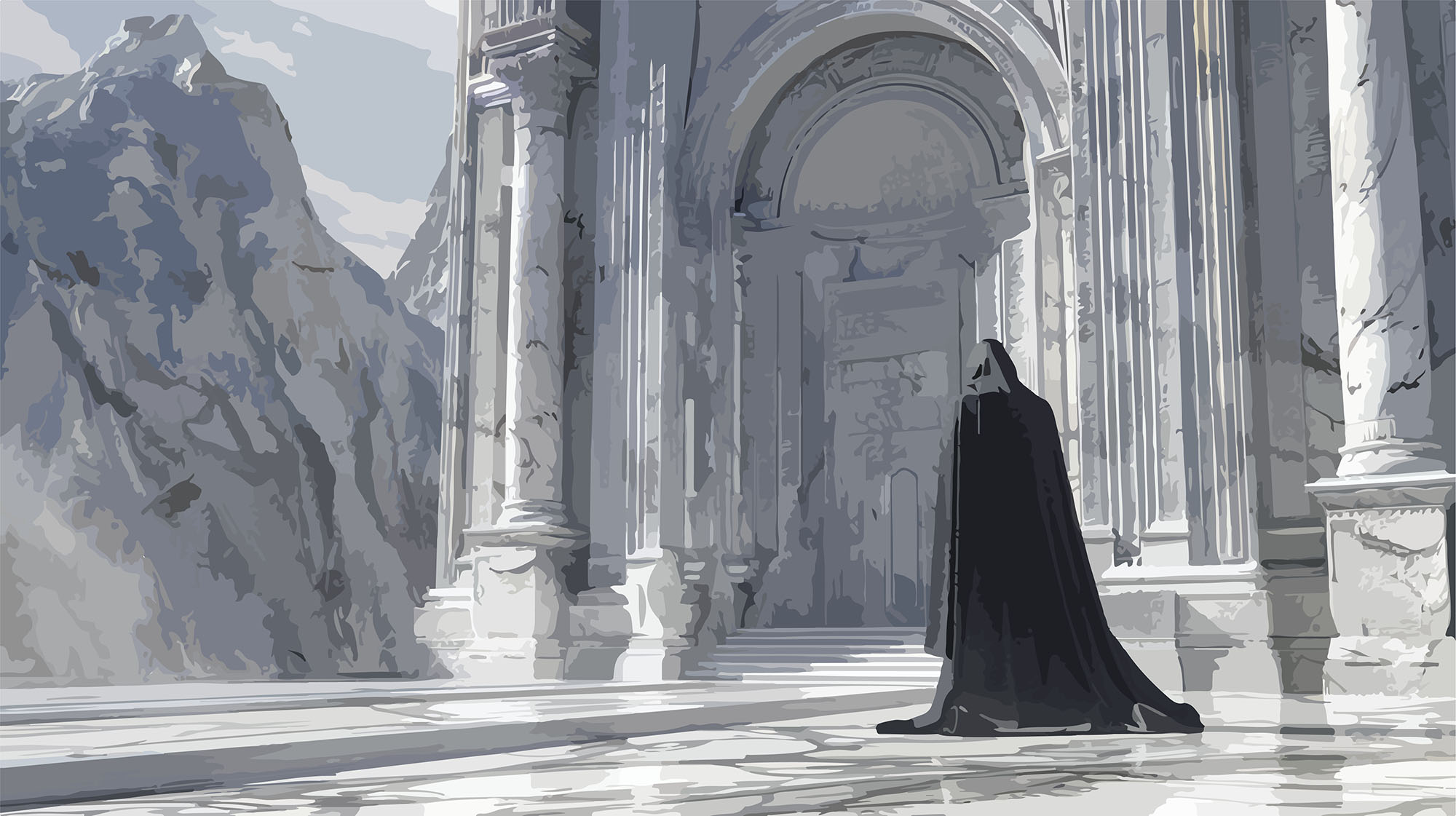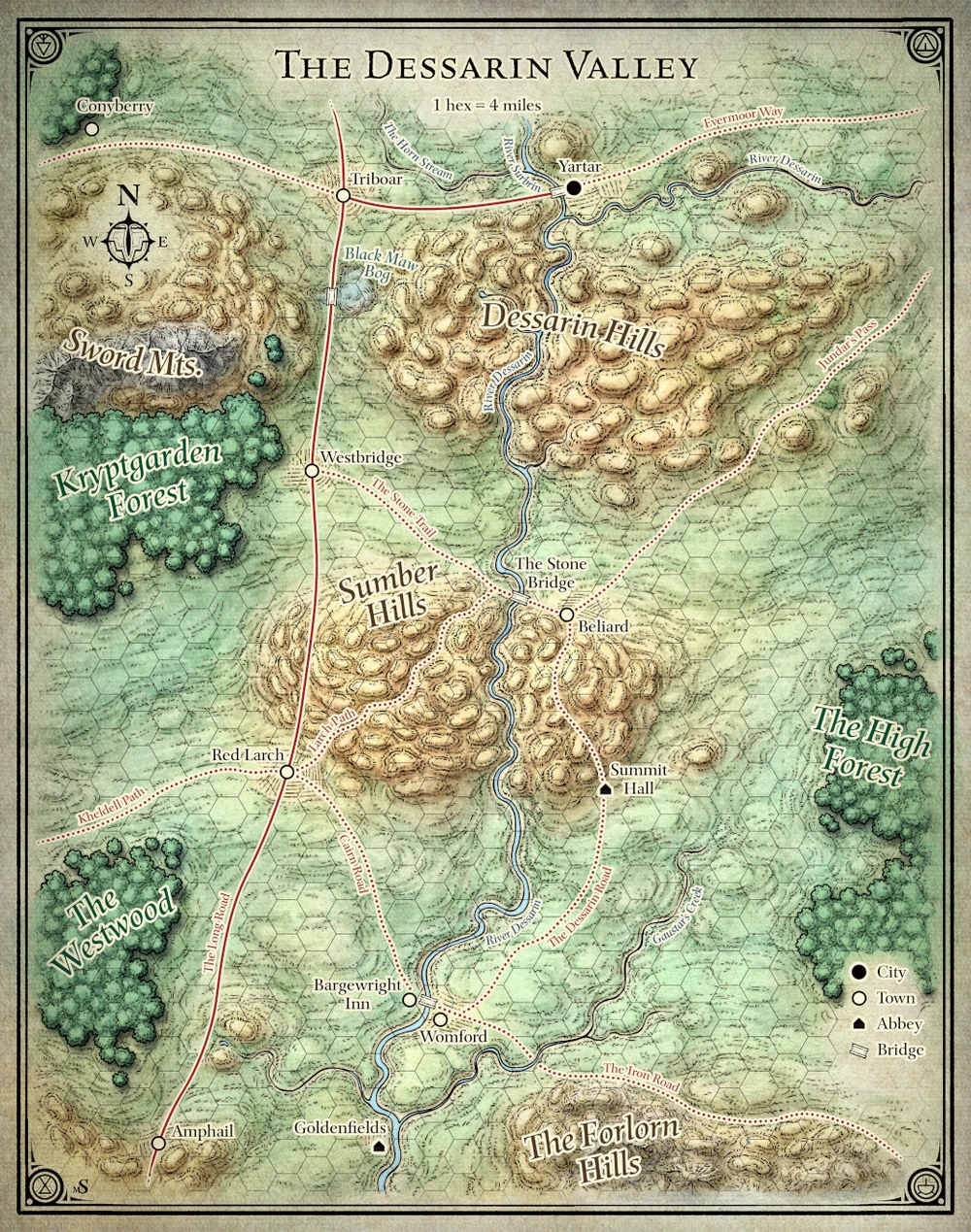As described in Part 4B, you have everything you need for the PCs to penetrate to the heart of the Kraken Society conspiracy and rescue King Hekaton.
But what if you want to take this even farther?
Here are some options. You can easily use one, some, all, or none of them.
OPTION #1: ADD A STORM GIANT THREAT
The storm giants know that King Hekaton and Queen Neri were meeting with representatives of the Lords Alliance and the Open Lord of Waterdeep, and they assume that the small-folk are guilty of murdering the queen and kidnapping the king. Isn’t it possible that, with or without Serissa condoning the action, the storm giants might be making retaliatory strikes on the coast and/or coastal shipping?
You can easily add this element to the adventure, adding aggressive attacks by the storm giants that mirror those from the other giant factions, and creating a new vector for the PCs to learn about Hekaton’s disappearance and/or get pulled into the politics of Maelstrom.
(The potential drawback to this option is that it removes the contrast between the storm giants — who have simply gone radio silent under the waves while their former subjects run wild — and the other giant factions.)
OPTION #2: THREE CITY HOOKS
To remove the element of random chance from the PCs getting pulled into the Kraken Society investigation, add explicit hooks from each of the Three Cities pointing to the Uninvolved nodes. (These connections do not have to be direct, of course, or even terminate with the Kraken Society. You just need quest lines that intersect with the Kraken Society nodes.)
Alternatively, you can have missions given to the PCs by any factions they choose to join to point them to these nodes.
OPTION #3: EXPAND THE KRAKEN SOCIETY
To expand the Kraken Society’s presence in the campaign, add more Uninvolved nodes throughout the Sword Coast and Savage Frontier. You can do this by just flipping through Storm King’s Thunder, picking a location from the gazetteer, and then brainstorming ways that krakenar agents could be trying to infiltrate that location.
As with the extant Uninvolved nodes, include clues in these nodes pointing to other Uninvolved nodes and also the Involved nodes. (Remember that your structural goal is to pull the PCs towards the Involved nodes, where they can find the clues leading to Hekaton.)
One particular place you could look at is the Dessarin Valley, where Ghald & Unferth are trying to launch multiple krakenar operations. Lord Drylund’s operation in Yartar is also located here. By adding several Kraken Society operations throughout the valley, you could turn the whole region into a micro-campaign within the campaign.
OPTION #4: BURY THE INVOLVED NODES
In the default structure, the PCs can run into either the Uninvolved nodes or Involved nodes during the Phase 3 pointcrawl. If you want to create a greater sense of depth in the Kraken Society conspiracy, however, then DON’T make the Involved nodes accessible directly from the pointcrawl: The only way to reach the Skum Lord, Reefkin, or Lord Drylund is via clues picked up in the Uninvolved Nodes (which remain accessible from the pointcrawl).
In practice, this will create a flow from Uninvolved nodes to Involved nodes to Purple Rocks to the Morkoth. The players will truly feel like they’re getting pulled deeper and deeper into the conspiracy.
This option is probably best used in combination with Option #3. Since you can no longer enter the Kraken Society investigation through the Involved nodes, you’ll likely want a few more Uninvolved options to replace those entry points.
OPTION #5: ENTRY VIA MAELSTROM & WATERDEEP
The burgeoning political crisis between Maelstrom and Waterdeep creates an alternative vector for the PCs to follow.
For example, imagine that the PCs follow a path similar to that suggested in Storm King’s Thunder: They journey to Maelstrom and manage to get an audience with Serissa. She would like to trust them — it’s what her mother would have wanted — but it’s impossible under the circumstances. If they want the storm court’s help (to do whatever it is the PCs came here to ask them to do), then they need to help bring those responsible for her mother’s murder and father’s disappearance to justice.
Rather than giving them a casino chip, however, Serissa is going to point them in the direction of the “treacherous” Knights of the Blue Moon.
Meanwhile, in Waterdeep, Laeral Silverhand knows something has gone wrong: She was supposed to meet with King Hekaton and Queen Neri, but then, from her perspective, they abruptly postponed the meeting and a storm giant raiding party ransacked the Hall of Reflected Moonlight and murdered many Knights of the Blue Moon. (If you’re using Option #1, this may have been followed by additional storm giant raids.)
If the PCs are already working with the Lords Alliance or Harpers, it’s not hard to imagine that Silverhand might want to call in some agents with a proven track record for dealing with giant issues to get to the bottom of what happened at Red Rocks.
Either way, the PCs will get briefed on the details of Neri’s Peace — or, at least, a version of those events — and pointed in the direction of Red Rocks, the Hall of Reflected Moonlight, and the Knights of the Blue Moon.
Whichever direction they’re coming from, this investigation could quickly reveal the mismatch in communications between Waterdeep and Maelstrom.
From here, add three clues to reveal the agent responsible. (A chambermaid working for Silverhand? A lesser Knight of the Blue Moon who’s secretly a krakenar agent? Both of them locked in a forbidden tryst and working together?)
This agent, through three more clues, can then point the PCs in the direction of the Skum Lord, for whom they work.
The Skum Lord, of course, is an Involved node, and the PCs are now inside the Kraken Society conspiracy.
Tip: You might find it useful, particularly if you’re using this option, to have Imperator Uther discover Queen Neri’s body and lead the raid on the Hall of Reflected Moonlight during the events of the campaign, instead of having these events play out before the campaign begins. It will be a lot easier to create the sense of high stakes if events are playing out in real time, rather than waiting on hold for weeks or months for the PCs to level up.
OPTION #6: THE EXPEDITION TO ASCARLE
An expedition to the sunken city of Ascarle sounds incredibly cool!
… it’s also a huge undertaking and probably way outside the focus of a Storm King’s Thunder campaign.
If you’d nevertheless like to provide a path for the PCs to follow to Ascarle — one more layer hidden within the Kraken Society conspiracy! — then I’d recommend placing clues in Purple Rocks and on the Morkoth pointing the way.
















